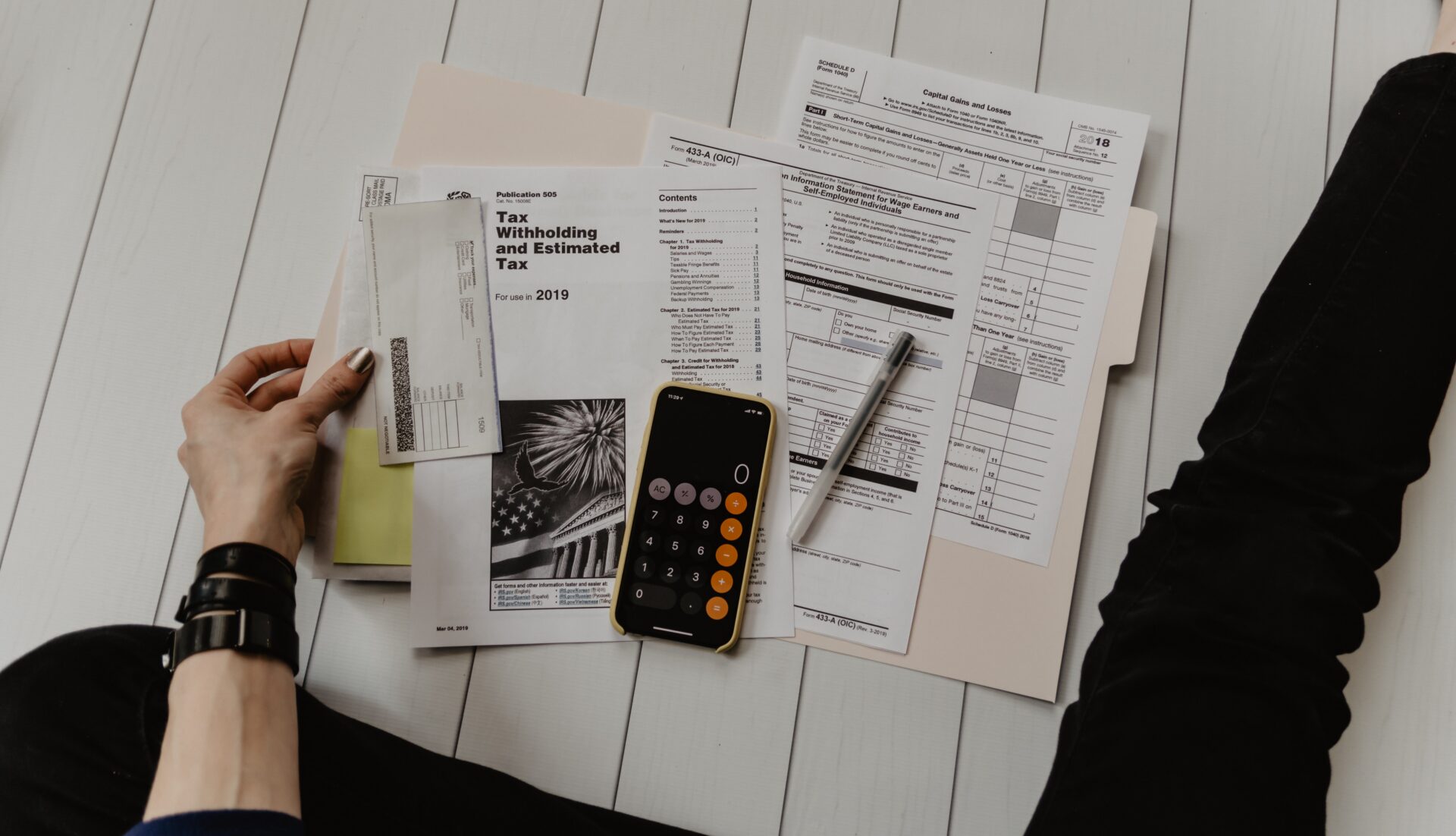The self-employed industry is booming. As of July 2023, there were around 4.24 million sole traders in the UK, which makes up a significant portion of the small business market. It’s easy to see why self-employment is so alluring, as it comes with a whole host of benefits. You can choose your own working hours, work from where you want and make more time for a better work/life balance. However, it can be incredibly daunting to take the plunge to become self-employed, and you may be wondering about the best way to get started.
If you want to know more about how to become self-employed in the United Kingdom, we’re here to help. We’ve put together this step-by-step guide that will take you to self-employed success.
Step One: Is Being Self-Employed Right for You?
It’s easy to get caught up in the benefits of working for yourself, but it’s important to remember that there are drawbacks, too. Here are the top pros and cons that you’ll need to consider before becoming self-employed:
Pros
- Pick the hours that you work.
- Work around your life and commitments.
- More control over your income and how much you charge.
- Autonomy over key business decisions.
Cons
- You may end up working more hours.
- Income may be irregular and vary from month to month.
- You’ll be responsible for your own bookkeeping and accounting.
- No employment benefits such as paid leave, sick leave or medical care.
Step Two: Limited Company or Sole Trader?
Before you take the step of going self-employed, you must decide which form of self-employment works for you. There are nuances between the types of self-employed status available. But if you cut it down to basics, you can be a limited company business owner or a sole trader. So what’s the difference?
- A limited company business owner sets up a business organisation and runs it as the director, making money through the business.
- A sole trader registers themselves as a self-employed worker and makes money as an individual. You, as a person, are the business.
For example, you could set yourself up as an electrician or start a limited company that provides electrical services. The differences have to do with scale. Being a sole trader involves much less administration and paperwork, and there is more flexibility involved as rules don’t tie you down. However, limited companies allow you to obtain investments in stocks and shares, hire employees, protect your brand name and limit your liability in the case of legal matters like bankruptcy.
Both have their advantages; both have their drawbacks. It’s important to take time to understand how they’ll benefit your plans and select the best option for you.
Step Three: Understand Your Self-Employed Obligations
On the subject of taking time to understand what’s important to your new business, once you’ve decided what type of self-employed worker you want to be, the next step is to work out what your obligations and responsibilities will be. At this point, you want to do two things.
You should look into general responsibilities and responsibilities specific to your industry.
General Responsibilities
In terms of general responsibilities, you’ll need to understand and research what is involved in the formation of your business. You need to be aware of any legal requirements, what tax you have to pay and what deadlines are involved with all of the above. These will vary from year to year, business to business, so make sure you find the details you need.
Industry-Specific Responsibilities
Regarding industry-specific responsibilities, you’ll need to consider details like compliance with regulations, laws governing your industry and other unique influencing factors. If you have any network connections, the best way to get coverage of these is to ask somebody already working in the industry. If you don’t, online forums can be a great place to start, as can simple research.
Step Four: Build Your Self-Employed Business Plan
A successful business needs a business plan. You need a strategy of how you will achieve growth and develop into a profit-building machine. You might also want to consider other aspects of business management, such as how you will tackle finances, find suppliers and more.
Before you register as self-employed, take the time to complete step three and create a comprehensive business strategy. Once you’ve set up your business, it’ll be difficult not to get moving immediately, so we suggest you don’t delay this step.

Registering to be self-employed is near-instantaneous and doesn’t have to be done before you start work — just to fit with the tax year. Establishing a limited company only takes a few days at the most. That means once you’ve taken off, you’ll want to fly. So, do your pre-flight checks now, rather than when you are in the air, and prepare for the day your employment status officially changes.
Step Five: Create Your Budget
Once you’ve made your plan, you need to consider the costs involved in getting your business operational. It may be that you have minimal start-up costs and have most of the things you need already, or you might have to purchase a whole host of new equipment.
Some things you may need to think about with your business budget include:
- Equipment such as tools, computers and phones.
- Desk and office equipment.
- Buying or hiring a vehicle if you’re travelling for work.
- Vehicle fuel costs and maintenance.
- Online subscription services to digital tools.
- Building and hosting a website.
- Advertising and marketing materials.
- Accountancy costs.
- Insurance.
You may only need a few of these things, but it’s still important to understand how much you need to invest straight off the bat. Spend time thinking about your personal expenses, such as rent, mortgage and bills, as this will impact how much you can afford.
The good news is that you can claim back the costs of business purchases via allowable expenses when you complete your self-assessment, but you’ll still need to be able to pay for them upfront.

Step Six: Register as Self-Employed
To register as self-employed simply means to register with HMRC. By doing so, you let HMRC know you will be earning money yourself and, therefore, must report on income and pay tax, including National Insurance contributions and personal income tax.
You do this by filling out a tax return every year. To submit your tax return, you need to register with HMRC directly. You can do this online. Just provide a few personal details alongside your email address, and you’ll have access to the online HMRC portal. Here, you can submit tax returns and manage your self-employed financial status.
Don’t worry if you don’t get around to registering right away; you have until the 5th of October on your business’s second tax year to do so. Tax years run from the 6th of April until the 5th of April the following year, so if you begin trading in January, you must register by the 5th of October of the same year, as this would technically be your business’s second year.
This is the only step you must take when registering for self-employment as a sole trader. If you are setting up a limited company business, you’ll also need to follow the next step.
Step Six(a): Register with Companies House
This step only applies to those setting up a limited company. If you are establishing an LTD, you must register with Companies House. To do this, you must submit your requested business name along with all required information, which includes a memorandum of association and articles of association. These documents are essentially foundational rules that state how your business will be governed and who is currently involved with the business.
If you need help registering your company, Mint Formations offers expert support.
Step Seven: Check the Details
At this point, you’ve covered all the essential practices. You’ve formulated your self-employed business plan, researched your obligations and registered as self-employed. Now, it’s time to review everything and check the details.
Before you venture forward with your new business, we advise you to take the time to ensure the foundations you’ve laid are sturdy.
Double-check the information you’ve supplied to HMRC and Companies House. Ask a financial professional to check your accounting practices are ready and that you haven’t missed anything. Speak to a business advisor about your plan and strategy. It may sound unnecessary, especially when you want to get going, but consider this:
Roughly 20% of businesses fail after two years, while 45% will fail after just five. Much of this failure comes down to self-employed workers not being able to stick the landing after a strong start, and much of that is due to infrastructure issues. Get things right before going self-employed and starting your new business venture, and you’ll be more likely to succeed.
Do you want help getting all the information you need to start your business and become self-employed? Mint Formations offer a range of services designed to support your needs. Get in touch today to find out more!

